Whether you’re trying to translate Chinese menus at a night market, interpret a photo of handwritten notes, or localize your app for Chinese users, choosing the right method to translate Chinese writing can save time, avoid misunderstandings, and build trust.
Chinese writing can be beautiful, mysterious—and hard to understand if you don’t know the language. Whether you’re a traveler, student, or business owner, learning how to translate Chinese effectively can open up entirely new opportunities.
In this guide, we’ll walk you through the most effective translation options available today, from free tools on your phone to professional translation services. You’ll learn when to use what, how to avoid common mistakes, and what to expect when it comes to cost—especially if you’re working on a project like Chinese video translation or app localization.
Table of Contents
- Option 1: Smartphone Apps – Fast and Easy for Everyday Use
- Option 2: Online Translation Tools – Good for Longer Text
- Which Translation Tools Are Commonly Used in China?
- 📊 Usage & Insights: What the Numbers (and Pros) Tell Us
- Option 3: Human Translators – Best for Quality and Cultural Fit
- What Types of Human Translation Services Are Available?
- How to Choose a Chinese Translator or Agency
- Can a Translation Be 100% Perfect?
- Understanding App Localization Price
- Final Thoughts: Choose What’s Right for Your Project
Option 1: Best Apps to Translate Chinese Instantly on Your Smartphone
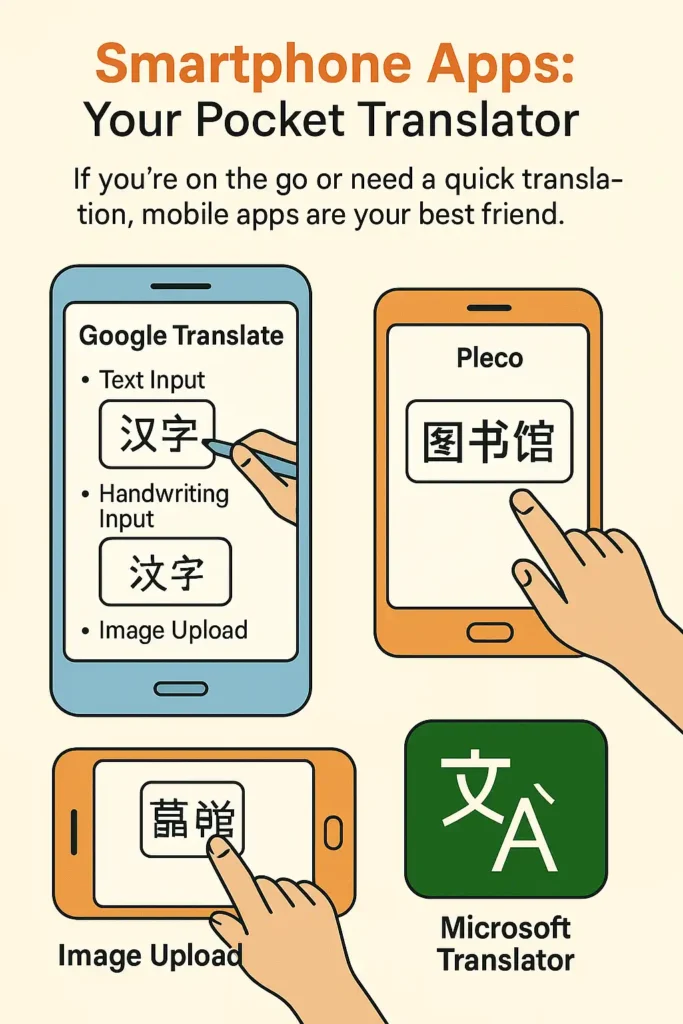
If you’re on the go or need a quick translation, mobile apps are your best friend. These tools are especially useful for everyday Chinese writing, like signs, menus, or social media posts.
Google Translate
This is one of the most popular tools. It offers several helpful features:
- Text Input: Type or paste Chinese characters to see the translation.
- Handwriting Input: If you don’t know how to type a character, you can draw it.
- Camera Translation: Just point your phone camera at Chinese text—like a menu—and the English translation appears on your screen.
- Image Upload: Take a photo of Chinese writing, then highlight the text you want to translate.
Pleco
This app is more advanced, and it’s especially useful for learners or people who want detailed explanations. You can:
- Snap a photo of Chinese text using its OCR feature.
- Tap on any character to learn its meaning, usage, and components.
It’s a powerful Chinese translation dictionary right in your pocket.
Microsoft Translator
A solid alternative to Google Translate, especially for conversations or voice translation.
These apps are great for simple, quick translations. But for longer or more important content, you’ll need something more reliable.
Option 2: Use Online Tools to Translate Chinese Text More Accurately
If you have a block of Chinese writing—like an article, email, or product description—online translation websites offer more space and better formatting.
Google Translate (Web Version)
Great for copying and pasting large chunks of Chinese text.
Offers side-by-side comparison, so you can check each sentence.
- Known for producing more natural-sounding translations.
- It handles English and European languages well, and its Chinese translation tools are improving quickly.
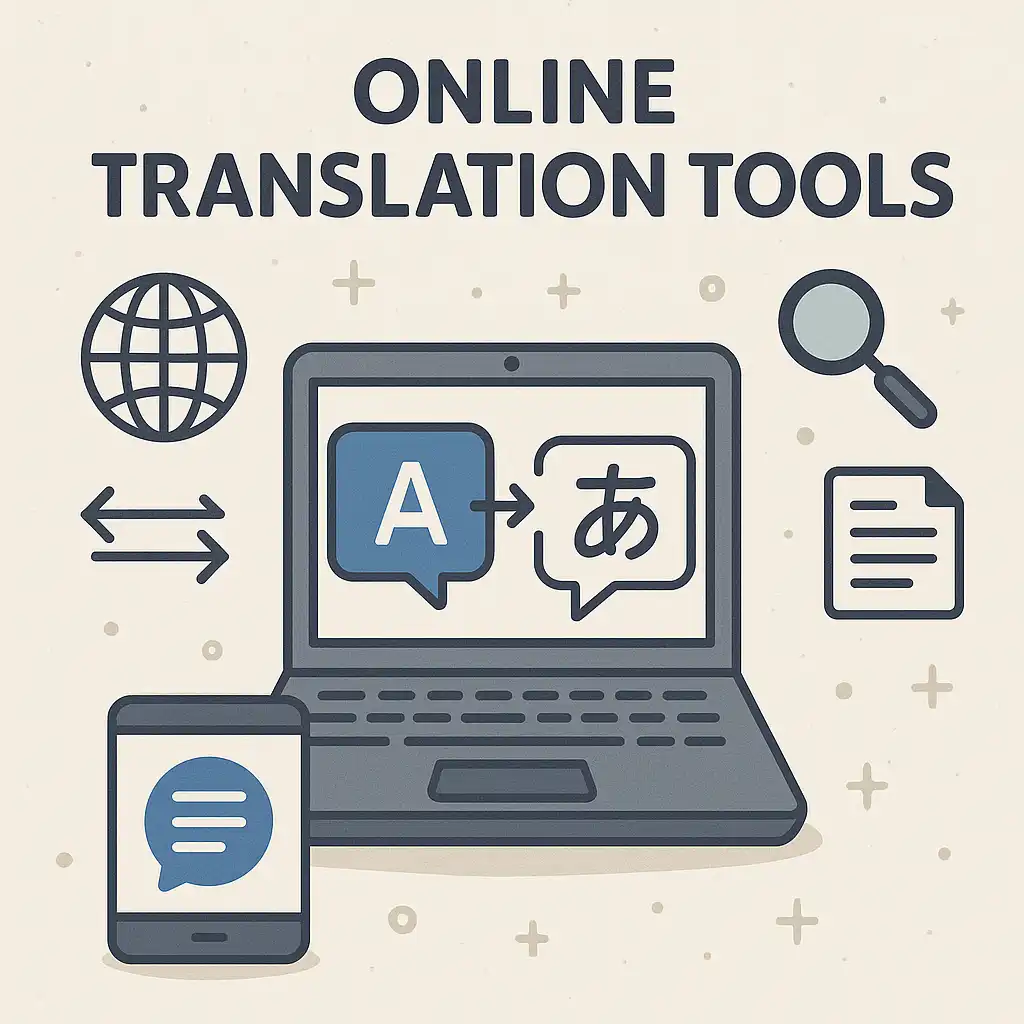
Which Translation Tools Are Commonly Used in China?
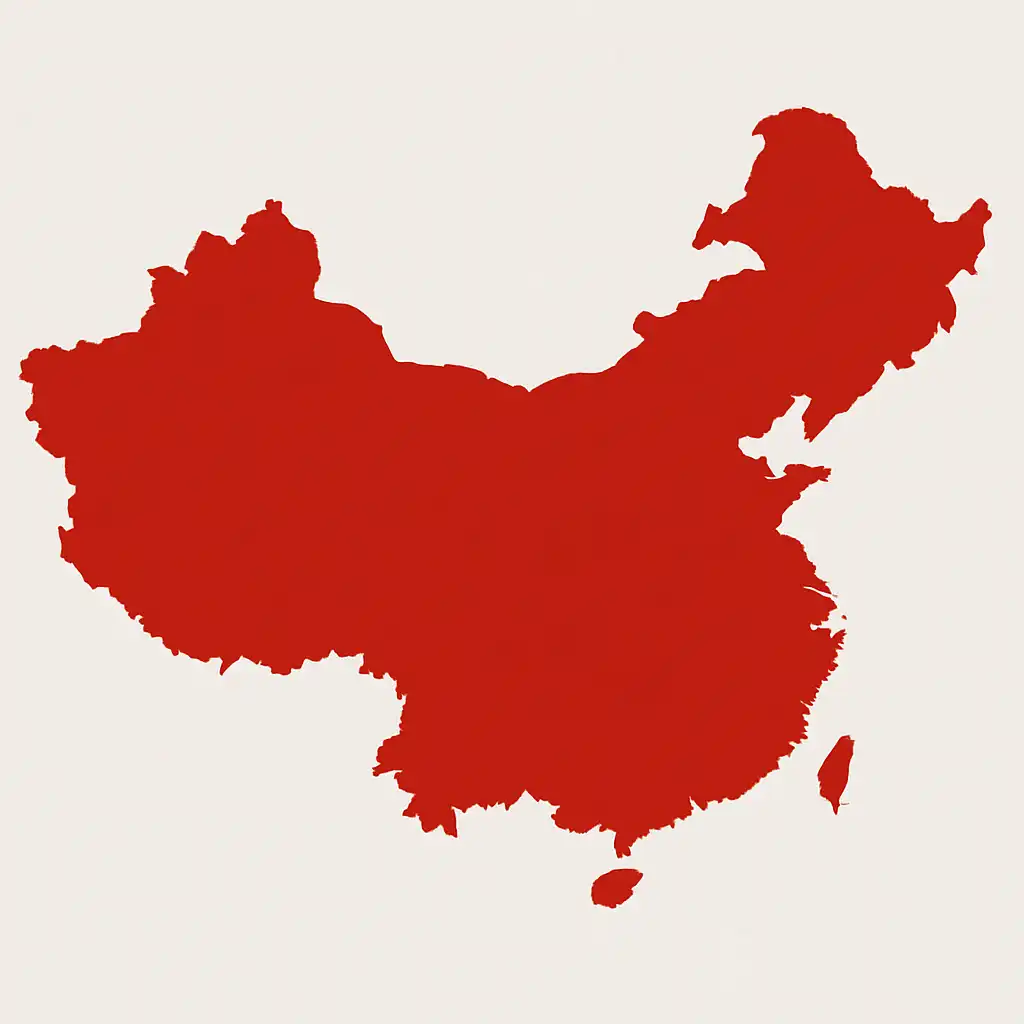
Top Translation Tools in China
- Baidu Translate (百度翻译)
Widely used across China, it often handles idioms and native phrasing better than many international tools. - Youdao Translate (有道翻译)
A favorite among students and professionals, especially for academic and business translations. - iFlytek Translate (讯飞翻译)
Known for its AI-powered features, including:- Voice-to-text translation
- Multi-language support
- Strong OCR and document translation capabilities
These platforms are ideal when your content is:
Rich in local expressions or cultural references
Aimed at Chinese-speaking audiences
📊 Usage & Insights: What the Numbers (and Pros) Tell Us
How Popular Are These Tools?
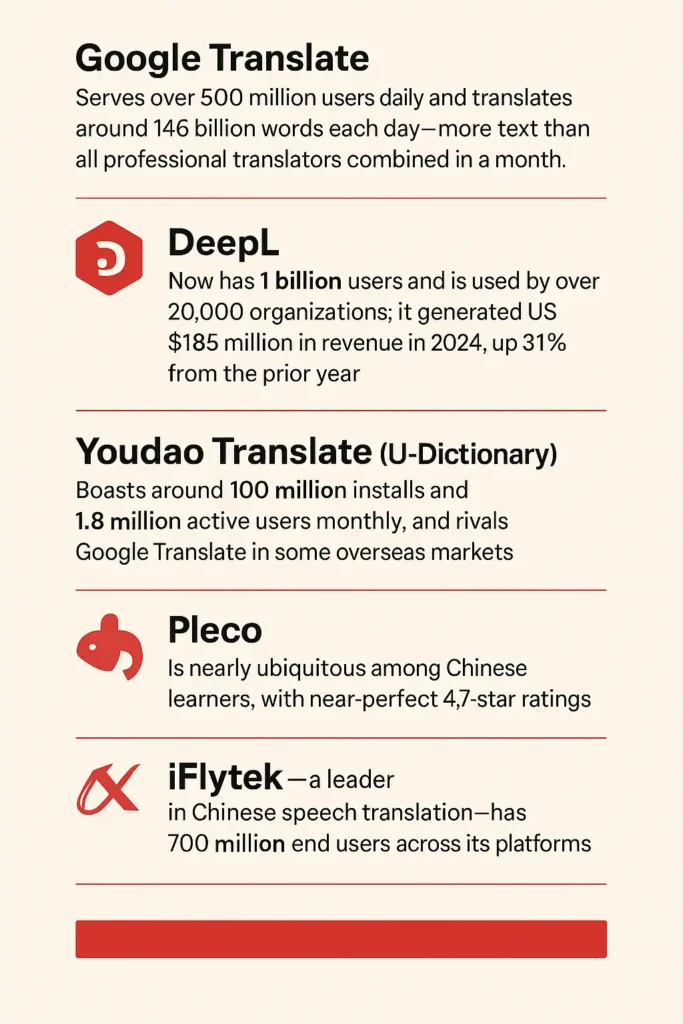
What Professionals Say
“MT tools are now used by over 70% of independent translators in Europe,” says the European Commission. Professional translators often rely on MT (machine translation) with appropriate human review.
Over 39% of marketers include MT in their localization strategies—and of those, 83% say it delivers high confidence in translation quality.
A Malaysian translation study compared Youdao and Bing, concluding: “Youdao better handles technical terms and idioms,” though post-editing is still necessary.
Practical Takeaways from Experts
- Use Google Translate or DeepL for first drafts—then refine with a human translator.
- Prioritize local apps for speed and nuance—especially Baidu, Youdao, and iFlytek.
- For creatives like Chinese marketing or video scripts, start with a human translator to capture tone, then use MT tools for internal revisions.
Option 3: Human Translators – Best for Quality and Cultural Fit
Apps and online tools are fast, but they have limits. If your content needs to be accurate, natural, and culturally appropriate, there’s no substitute for a human translator.
This is especially true for:
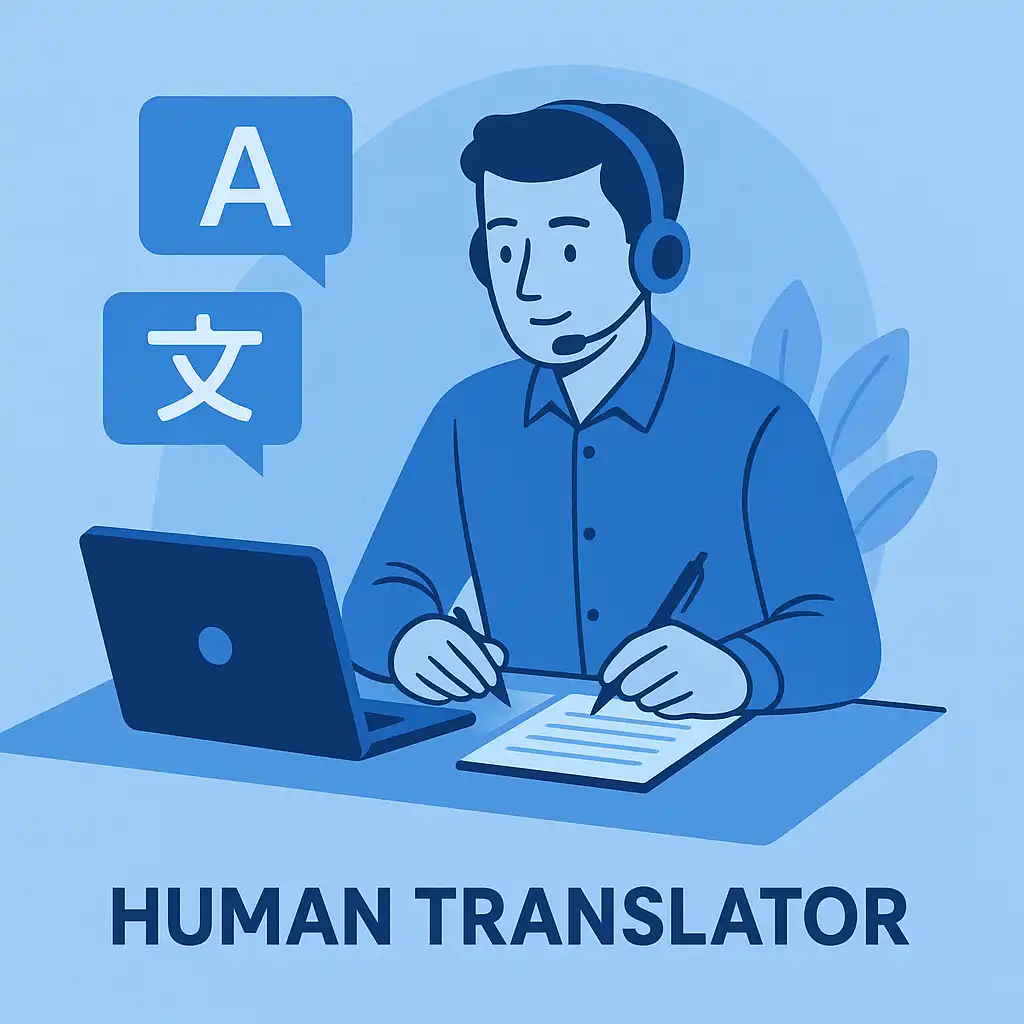
Marketing content targeting Chinese consumers
Legal, medical, or technical documents
Brand messaging that needs to sound persuasive, not just correct
Chinese video translation for subtitles or voiceovers
App localization projects with UI/UX, help text, and multimedia
When precision matters, there’s no better way to translate Chinese accurately than by hiring an experienced human translator.
What Types of Human Translation Services Are Available?
Not all translation work is the same. Here are the main types of services you might need:
| Service | Best For |
|---|---|
| Standard Translation | Everyday documents, business emails |
| Specialized Translation | Technical, legal, medical documents |
| Certified Translation | Immigration, visa, or legal paperwork (with official stamp) |
| Localization | Websites, software, apps—adapted for Chinese culture |
| Transcreation | Creative marketing or ads that need emotional impact |
| Interpreting | Spoken translation during meetings or events |
How to Choose a Chinese Translator or Agency
Looking for help with Chinese translation? Here’s what to check:
- Language Variant
Do you need Simplified Chinese (mainland) or Traditional Chinese (Taiwan, Hong Kong)? Do you need Mandarin or Cantonese? - Your Industry
If you’re working on Chinese video translation for a product demo, pick someone with multimedia and marketing experience. - Native Speakers
The best results come from translators who are native speakers of the target language. For example, to get natural Chinese, work with a native Chinese translator. - Experience and Samples
Ask about previous work in your field. Look for samples or run a paid test. - Quality Process
Top agencies follow a “translate → edit → proofread” workflow and use tools like Translation Memory (TM) for consistency. - Pricing and Transparency
Rates may be per word, per hour, or per project. Make sure the agency explains their process and costs clearly. - Data Security
For sensitive files, make sure your translator uses NDAs and secure storage.
Can a Translation Be 100% Perfect?
Not really—and that’s okay. Translation is more than replacing words. It’s about rebuilding meaning, based on context, culture, and purpose.
Even two expert translators might offer different versions of the same sentence. What matters is that the translation is:
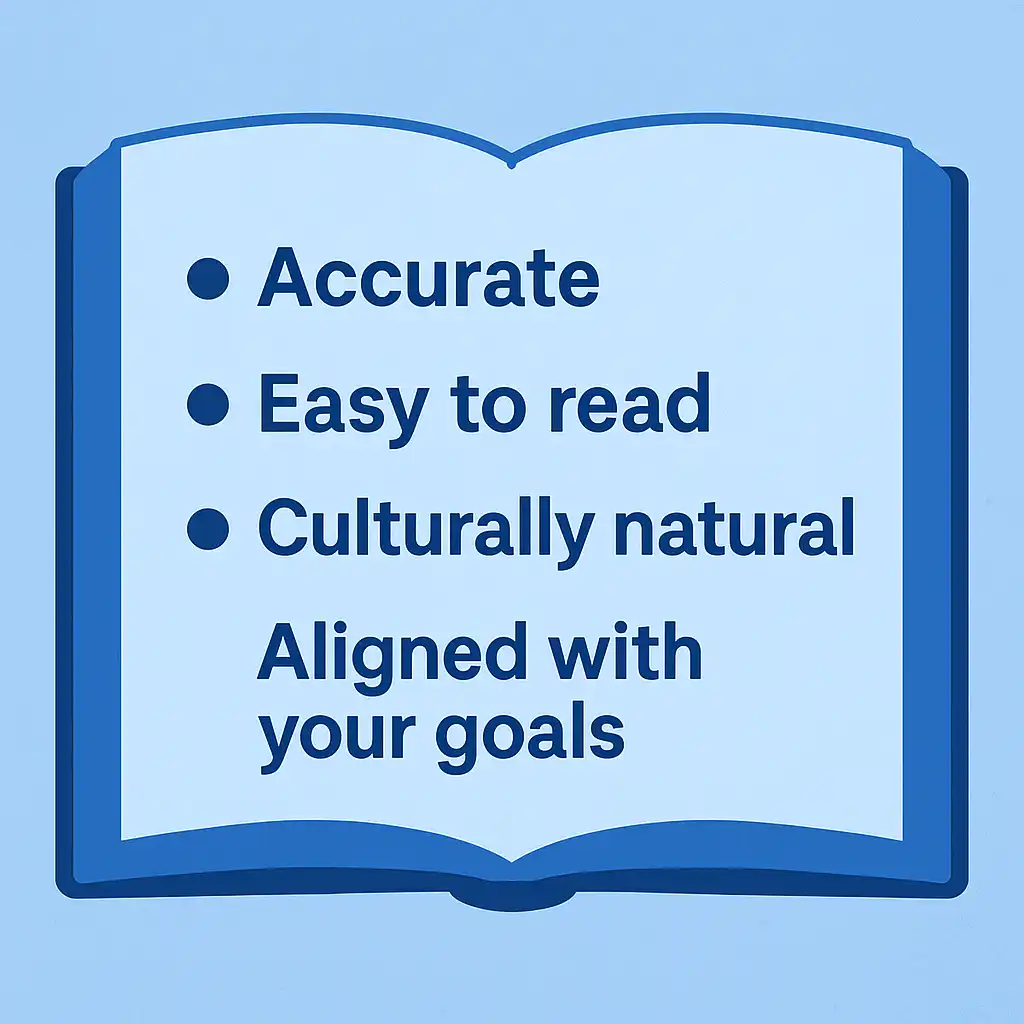
In marketing, for example, the “right” translation is the one that gets people to click, not just one that matches the dictionary.
Understanding App Localization Price
How Much Does Chinese Mobile App Localization Cost?
If you’re building a product for the Chinese market, app localization is more than just translation. It means making your app feel local to users in China.
Here’s what affects the app localization price:
| Factor | What It Means |
| Word Count | More content = higher cost |
| Content Type | Marketing copy, videos, and UI text all priced differently |
| Cultural Adaptation | Updating images, colors, or symbols for Chinese audiences |
| Payment Methods | Adding Alipay or WeChat Pay can be part of localization |
| Languages & Variants | Simplified or Traditional Chinese? One or both? |
| QA & Testing | Includes language checks, layout testing, and device compatibility |
| Project Management | The more complex the project, the more time is needed to manage it smoothly |
Pricing Models:
- Per character or per word
- Per hour
- Per project
What’s the typical range?
A small app with minimal features might cost a few thousand dollars. A full-featured app with video, content, and voiceover may cost tens of thousands—but it’s a long-term investment that pays off through better user experience, trust, and revenue.
Final Thoughts: Translate Chinese with Confidence—The Right Way
When it comes to turning Chinese text into something your audience can truly understand, your method matters. Whether you’re working with menus, marketing, mobile apps, or multimedia, you deserve a solution that’s both efficient and culturally accurate.
If you need to translate Chinese for your business, brand, or project, don’t rely on one-size-fits-all tools. Work with professionals who understand not just the words, but the meaning behind them.
Need expert support?
We specialize in helping global clients translate Chinese documents, websites, apps, and videos with precision and cultural sensitivity. From everyday content to high-stakes localization—we’re here to help you succeed. Contact us today!
